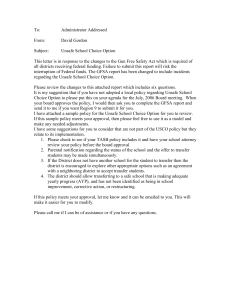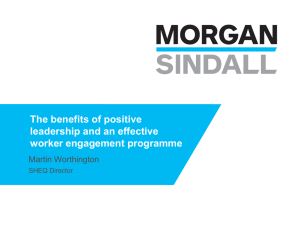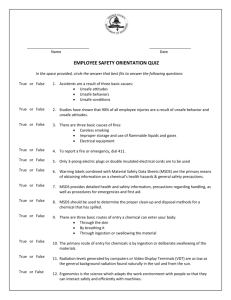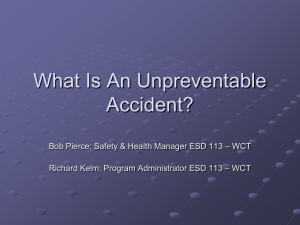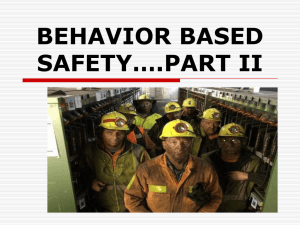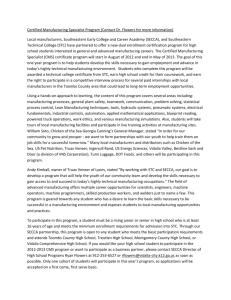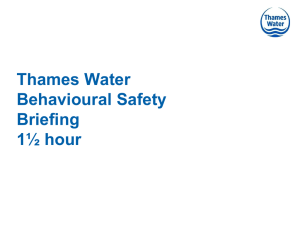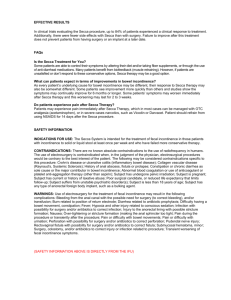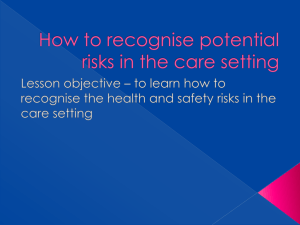Protective Behaviours Presentation final
advertisement
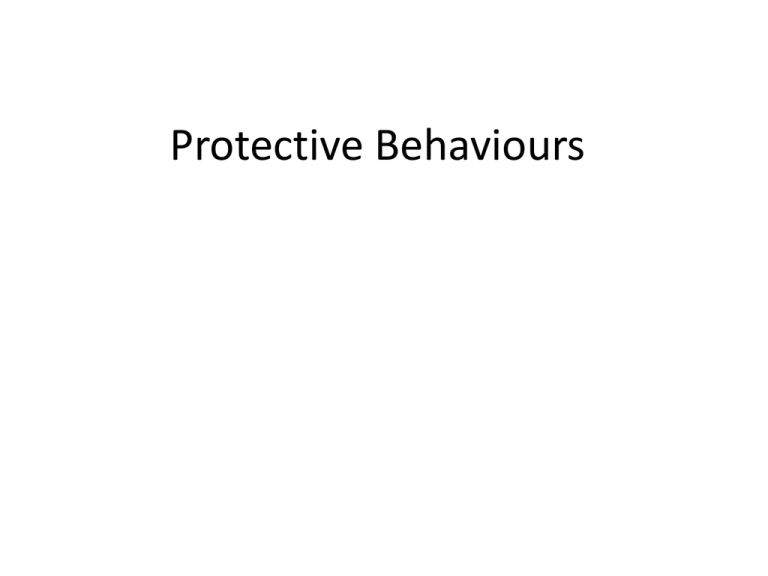
Protective Behaviours Why teach Protective Behaviours? • 96% of abused children are abused by somebody they know (Aust. Inst. Of Health and Welfare 2000 – 2001) • 1 in 4 girls and 1 in 7 boys are sexually abused in Australia before they turn 18 (Aust. Inst. Of Criminology 2004) • We cannot be with children 24 hours a day to protect them • We need to empower children with the right to feel safe and give them the skills to keep themselves safe • Only 3% of children will report their abuse (Savi Report 2004) • Students with a disability are at even greater risk. TOUCHING CONTACT FOR THE CHILD WITHOUT A DISABILITY • • • • • • • Mother and father Siblings Members of extended family Teacher or caregiver Sports coach on rare occasions Family doctor on rare occasions Dentist on rare occasions Reference. Freda Briggs, Developing Personal Safety Skills in Children with Disabilities, 1995 TOUCHING CONTACT FOR CHILDREN SEVERE DISABILITIES • • • • • • • • • • • • • • • • Mother / father Siblings Extended family members Family doctors Physiotherapists Occupational therapists Care assistants Teachers Social workers Speech therapists Hearing therapist (deaf children) Educational psychologists Dentists and dental nurses Taxi and bus drivers Ambulance drivers Others who specialize in specific disabilities Reference. Freda Briggs, Developing Personal Safety Skills in Children with Disabilities, 1995 Categories of Abuse • • • • Physycal Sexual Emotional Neglect Theme 1 • “We all have the right to feel safe all the time.” What are the most important words? Create a poster that could be used to teach this theme What should we teach? Feelings – Yes/Safe/Comfortable Feelings and No/Unsafe/Uncomfortable Feelings – Feeling Safe and Feeling Unsafe Safety Safety Continuum – – – – Safe Fun to feel scared Risking on Purpose Unsafe Safe = Choice + Control + Time limit What should we teach? • Early Warning Signs What are they? Different for different people • Dobbing as opposed to telling If you or somebody else is unsafe of feels unsafe it is telling not dobbing Theme 2 “We can talk to someone about anything” What should we teach? • • • • • • Networks Persistence Public and Private Circles Different “NO’s” Three Questions to stay safe – Do I get a Yes or No Feeling? – Does an adult know where I am? – Can I get help if I need it? • Secrets SECCA Sexuality Concepts Resource Resources • Safe4Kids – Holly-Ann Martin www.safe4kids.com.au Phone: 0422 971 189 • Protective Behaviours WA www.protectivebehaviourswa.org.au Phone: 0409 071 068 • SECCA (Sexuality Education Counselling and Consultancy Agency) www.secca.org.au Phone: 9420 7226 • People 1st Program (PIP) www.people1stprogramme.com.au Phone: 9227 6414 • Family Planning Association, Queensland www.fpq.com.au Phone: 07 3250 0240
